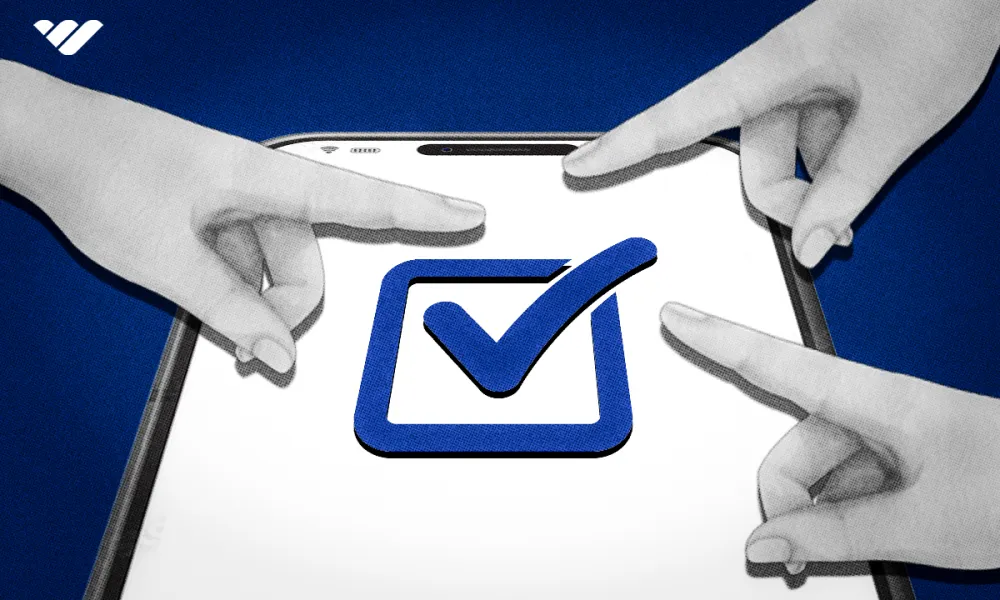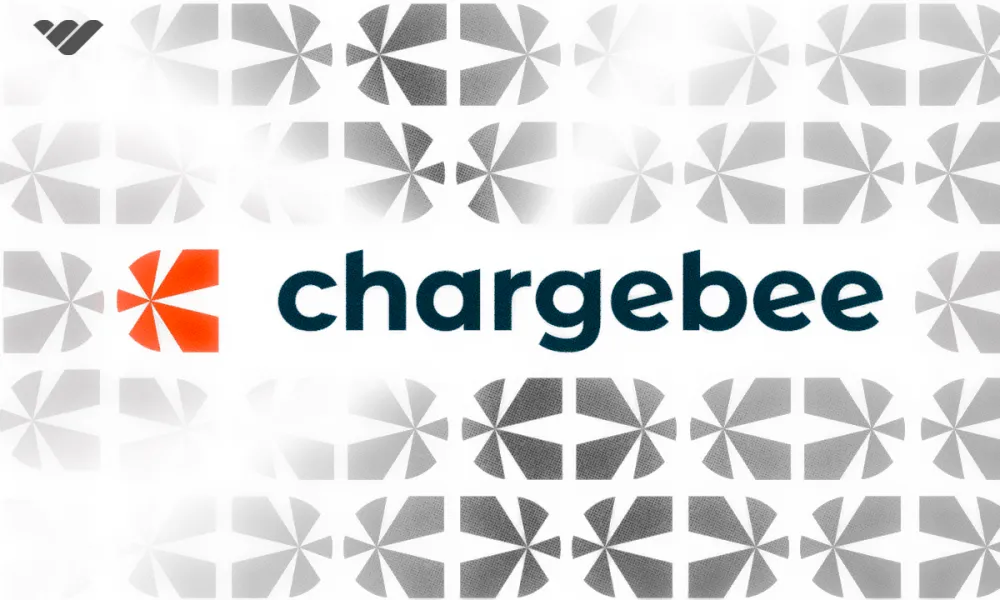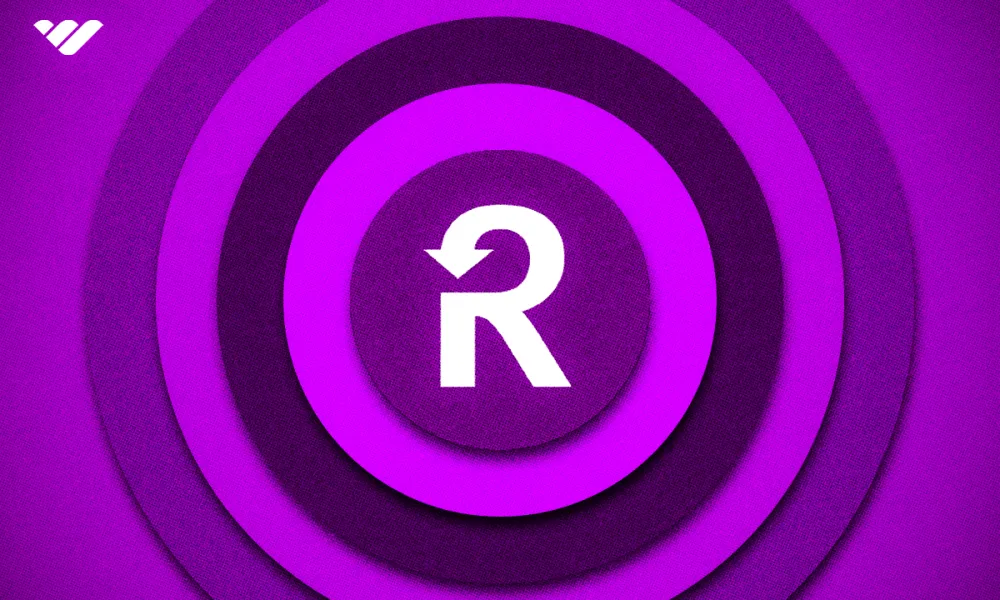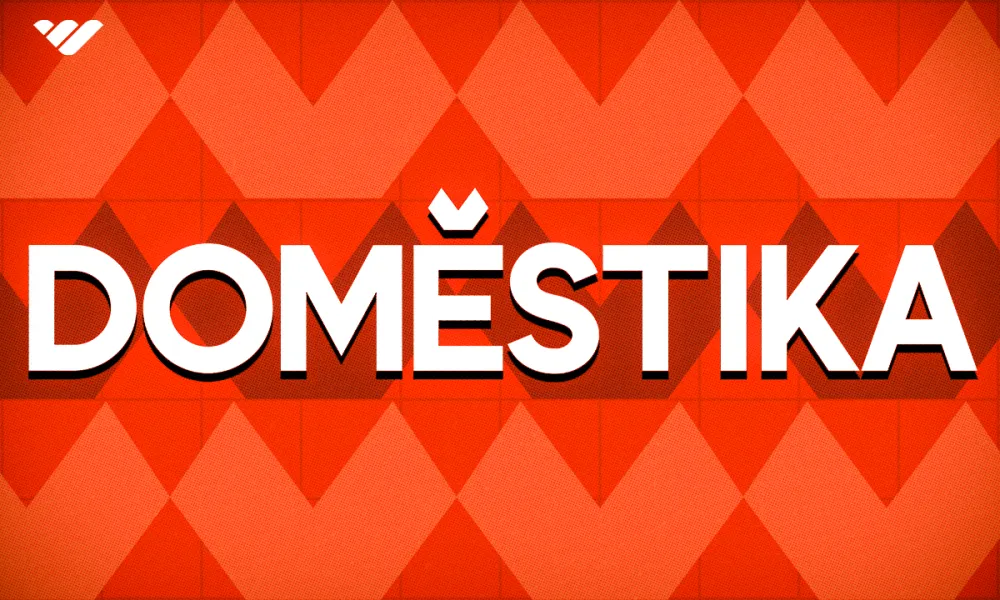Discover the differences between Headspace and Calm, two top meditation apps. From sleep stories to guided mindfulness, find out which one suits your needs for relaxation, focus, and personal growth.
Headspace and Calm are two of the most popular meditation apps around, helping you sleep, focus, and learn mindfulness.
They offer guided sessions in meditation, breathing exercises, and personal growth. And they both offer chill music to relax or focus.
Both have a 4.8 rating on the Apple App Store from over 2.8 million users and are priced the same annually, so how do you know which is best?
To decide, I spent a week using both apps to see how they compared.
This review will explain what each app is for in every aspect, to help you make your own verdict. I’ll also give my personal preference at the end.
For context, I’m coming at this Headspace vs Calm review with a beginner’s experience in meditation, but I am a massive fan of ambient music—I use it when I work.
Ok. Take a deep breath, we’re about to begin.
Headspace vs Calm: A quick comparison
| Category | Headspace | Calm |
| Pricing | $12.99 per month | $14.99 per month |
| Focus | Great for mindfulness & personal growth | Great for sleep meditation |
| Tone | Often a podcast & chatty discussion tone. | Always calming & dreamy voices. |
| Guides | Includes video guides for exercises. | No video guides, but custom scenes. |
| Music | Award-winning music artists. | Large library of focus music, including generative music. |
| Features | Ability to adjust volume balance towards the voice. | Minimal ASMR content. |
| App Store Ranking | #66 on U.S. App Store | #9 on the U.S. App Store |
What is Headspace?
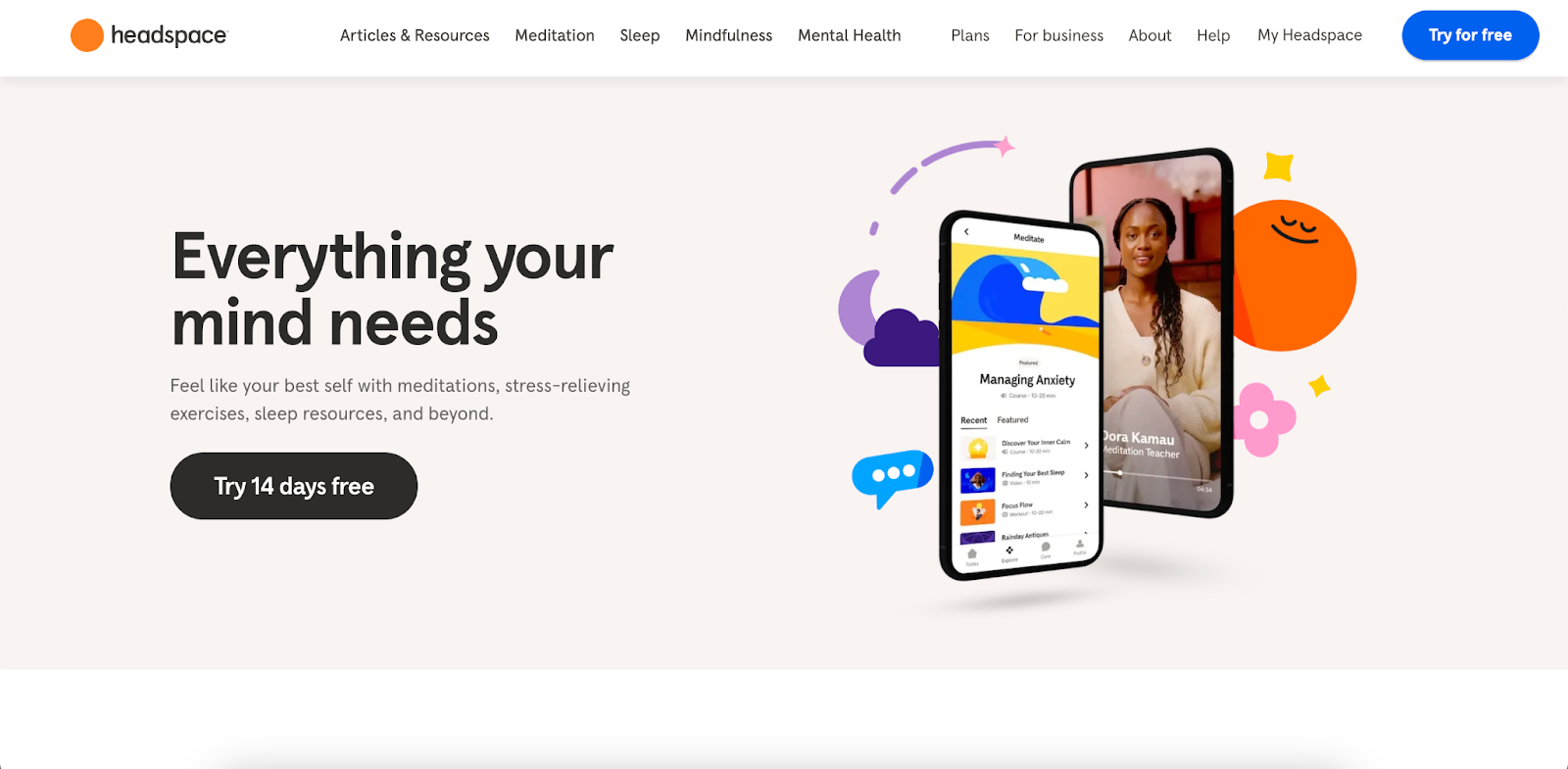
Headspace is a meditation and mental health app, founded in London, in 2010.
With over 70 million downloads, people are drawn to its meditation guides, life coaching, and focus music.
Headspace reports that after using the app, 32% of people experience less stress, 59% of people are less anxious, and 70% experience improvement in depression symptoms.
Its primary purpose is mindfulness and personal growth. Sessions are designed to help you control your mood and responses to daily life’s triggers.
Unlike Calm, content is rarely fictional. Instead, it uses podcasts and narrations with experts and like-minded people, discussing real-world topics.
What is Calm?
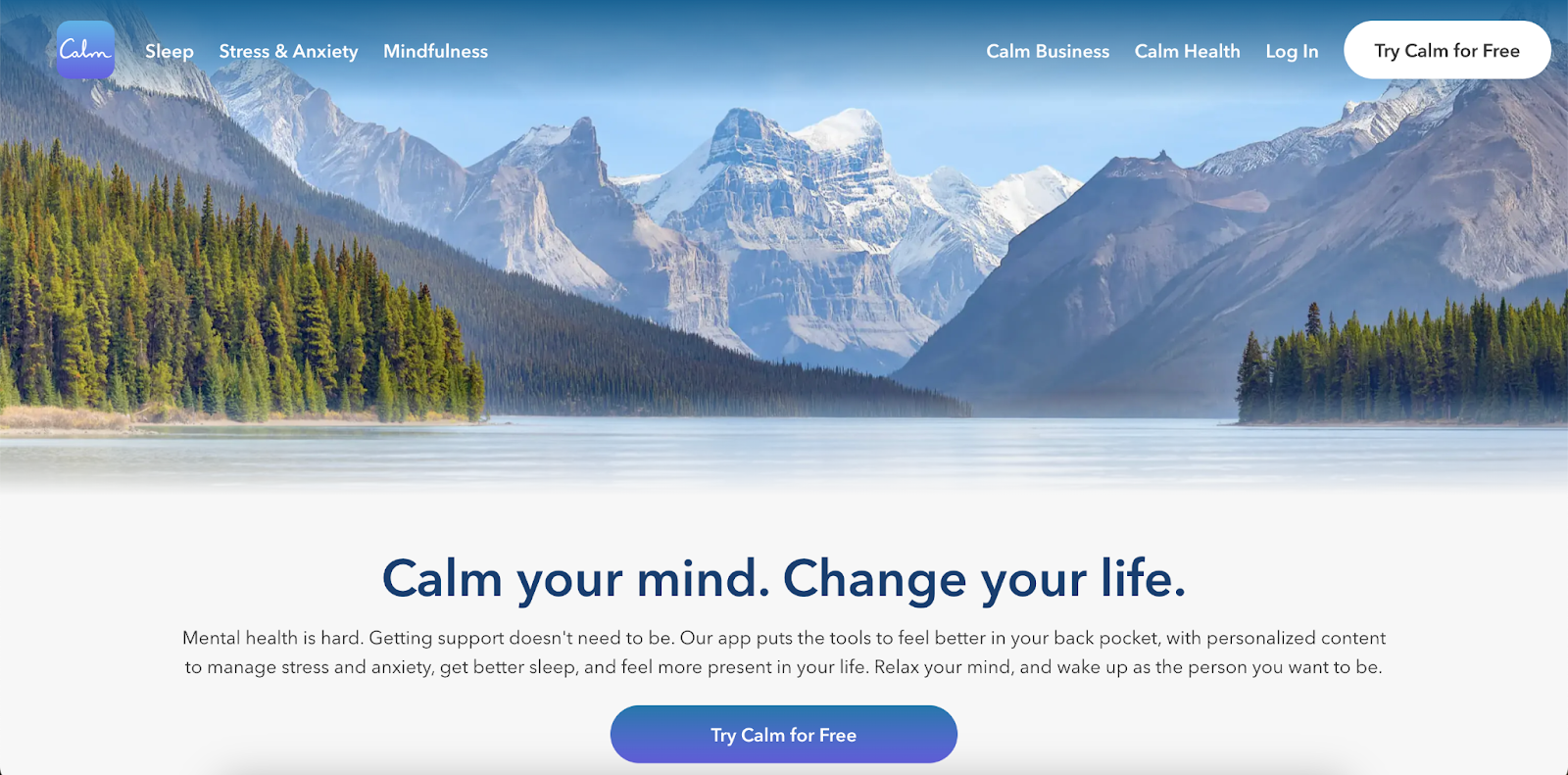
Calm is a meditation and sleep app, founded in California, in 2012.
With over 150 million downloads, it has 4 million active users, enjoying listening experiences that are designed to help calm you and induce sleep. It features big-name narrator voices, from popular podcast hosts to Hollywood actors and sports stars.
With the primary purpose of relaxation, even its personal growth discussions and meditation guides are done with a very calming vibe.
Headspace vs Calm: What's the difference
Before we get started, know that you can use Calm on your browser or mobile app. I’m using the mobile app across this review.
Pricing and plans
Headspace
Headspace offers annual or monthly subscriptions, for the following prices:
- Annual: $69.99
- Monthly: $12.99
- You can get a free 7-day trial on the monthly subscription and a 14-day trial on an annual subscription.
Calm
Calm also offers annual or monthly subscriptions, for:
- Yearly: $69.99
- Monthly: $14.99
- When taking out the yearly subscription, new users are offered a free 14-day trial.
My experience with getting started
Headspace
Headspace is very easy to sign up with and get to grips with, especially going into it with zero expectations.
Upon the first launch, I was met with a bunch of ‘tasks’ to get started with. They’re refreshed every day, which provides some direction and momentum.
The beginner tasks could be seen as patronizing to anyone familiar with meditation apps, but I appreciated it. Later in the week, I found the tasks changed and became more advanced.
Shortly after my first session, there was a ‘check-in’ quiz that asked how I was currently doing. The results were recorded in my profile.
Calm
I headed over to Calm with really no idea what to expect, other than that I had seen countless ads for it on Instagram.
So, I appreciated that it started with a quiz to try to understand my ‘calming’ needs. It helped me realize my general state of anxiety and decide why I’d like to meditate.
Then, I was asked to pay. Did Calm actually record my quiz for my benefit, or was it a trick to get me to sign up? We’re about to find out.
My experience with the interface of both apps
Headspace’s linear design
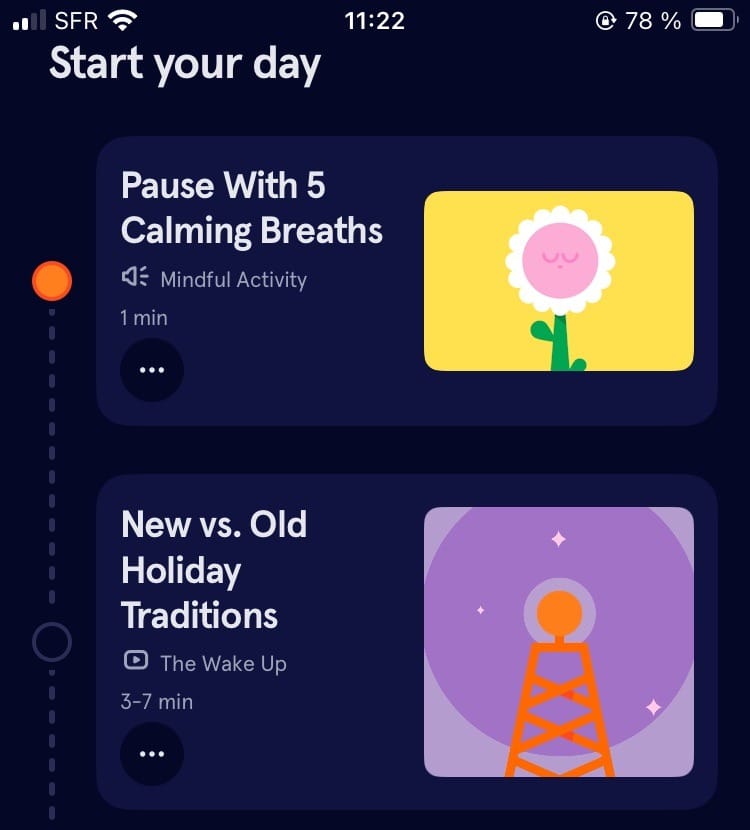
The Headspace app homepage has a linear design to it. There are suggested tasks for your morning, afternoon, and evenings - such as a podcast, meditation technique, mindfulness activity, or sleep music.
The design promotes an organized and consistent use. But, it lacks the serenity of Calm.
Appearance customization is non-existent, but in general, the UX is slick and easy to navigate. You can search meditations by keyword, or the pre-defined genre tabs.
Playback works like a podcast ordinarily does. You can lock your screen and airplay to another device.
There’s also an option for ‘Haptic feedback’ - so your phone vibrates when it’s time to take a look at the screen. You can turn on closed captions, which is a nice feature if you’re unable to listen to the audio. You can also download programs and podcasts for offline listening.
For visual guides, Headspace is a step above Calm, offering tutorial videos for yoga positions, and animated circles that reflect how you should be breathing.
Its use on the Apple iWatch is particularly impressive, giving you the chance to hit a ‘panic’ button when you need an emergency meditation session.
Calm’s relaxing scenes
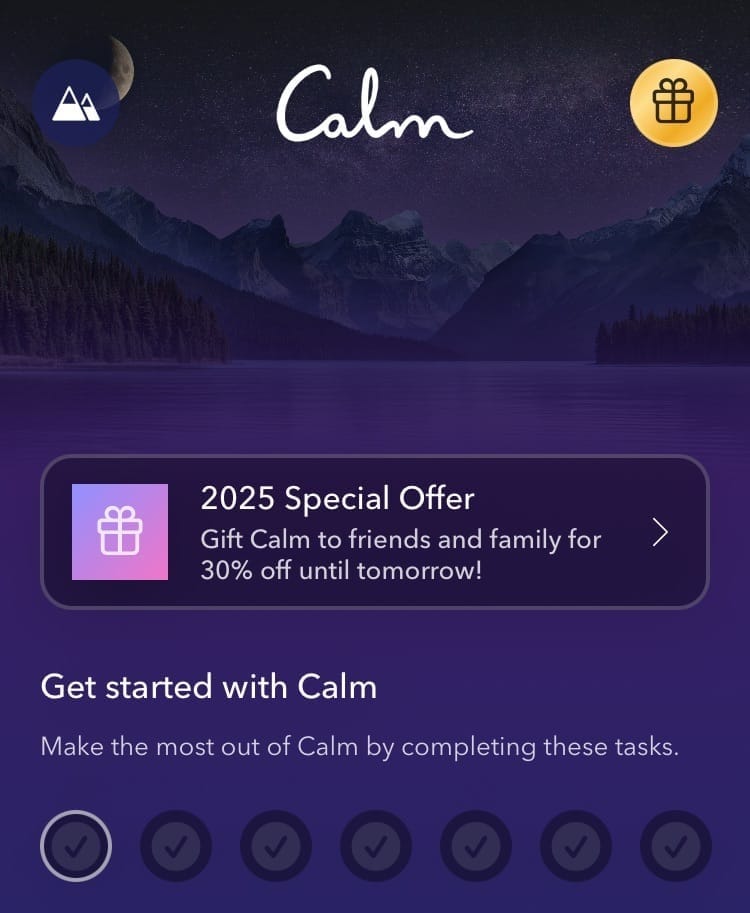
Every time I launched the Calm app I was immediately met by a calming, late-night outdoor ambiance. Honestly, this was relaxing already.
That quiz I did earlier about my needs didn’t seem to have provided any input (unless it was hidden).
Calm suggested that I customize my app, with a home screen that will welcome me on the app every time. This serves as the sort of ‘default’ calm space you’ll get with the app. You can set it to continue playing sound when you minimize the app. Headspace doesn’t offer this and that’s a shame.
I love the calm space scenes that I can choose from. Whether it’s a waterfall, snowy night, or ambient drone, this really helps me focus or chill out. I found it especially pleasant on public transport.
Digging into the app, it’s very conveniently laid out with a strong UX design. It’s easy to find what you want and you can search by keyword, genre, meditation, sleep, and even your favorite narrators.
Playback works like any streaming app, with the ability to Airplay (on iOS) to another device, such as headphones or a smart TV.
You can also add your favorite stories to custom playlists, and click like or dislike, to get better recommendations in the future.
Like Headspace, you can download stories for offline playback, which I think is a crucial feature for a meditation app, if you’re traveling.
You may also be interested in:
- Best online fitness communities to keep you motivated all year round
- Talkspace vs BetterHelp: What’s the best online therapy platform?
How I found the desktop browser experience
For any of you out there who may want to use Headspace or Calm on a computer (such as while working at your desk), here’s a quick review.
Headspace
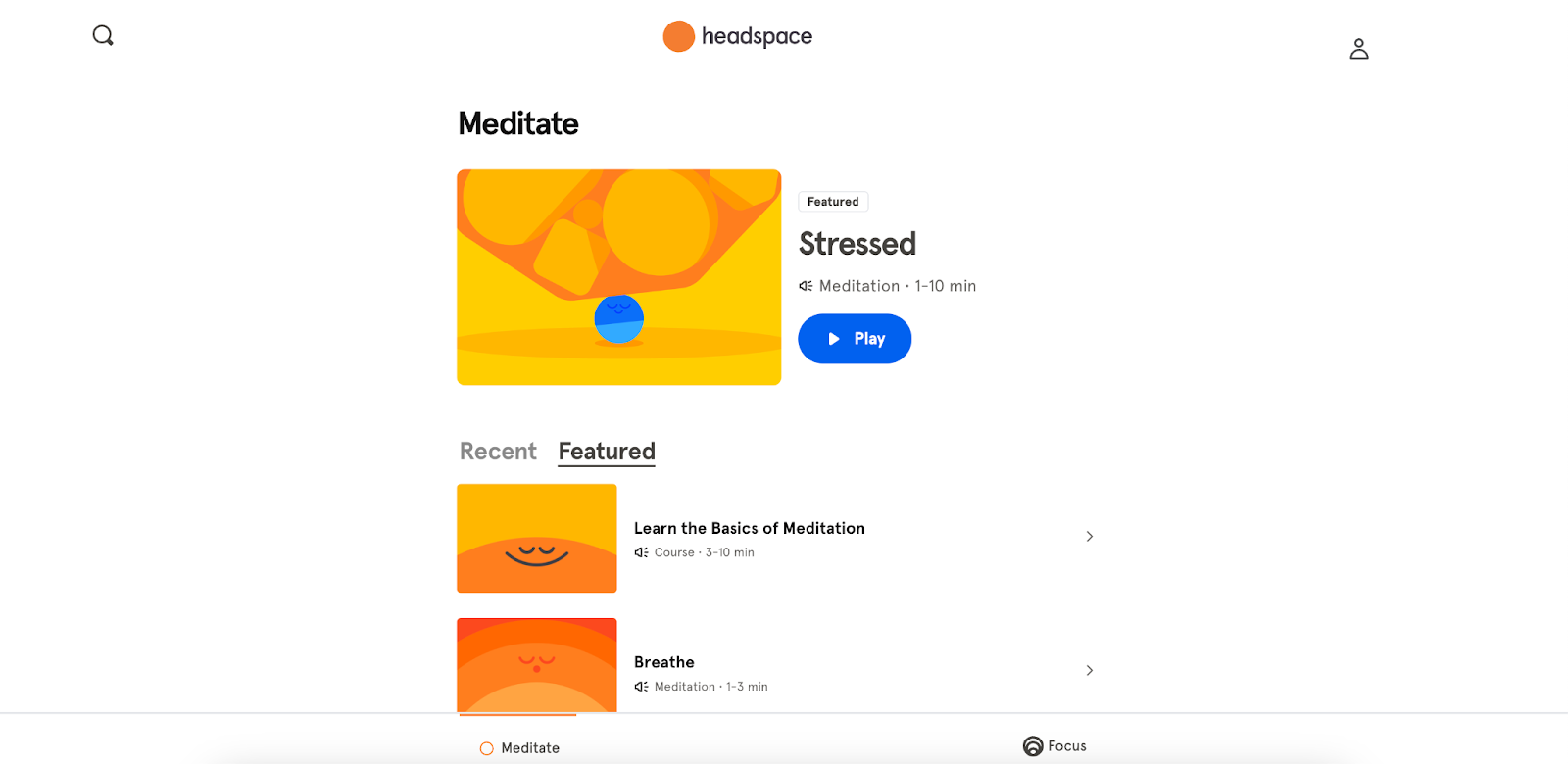
Headspace’s desktop experience is separated into two tabs - meditate and focus. All the content you can watch and listen to on the mobile is found here, but the layout is far less intuitive and I’d suggest sticking to the mobile app. Features like mood tracking are not available on browsers.
Calm
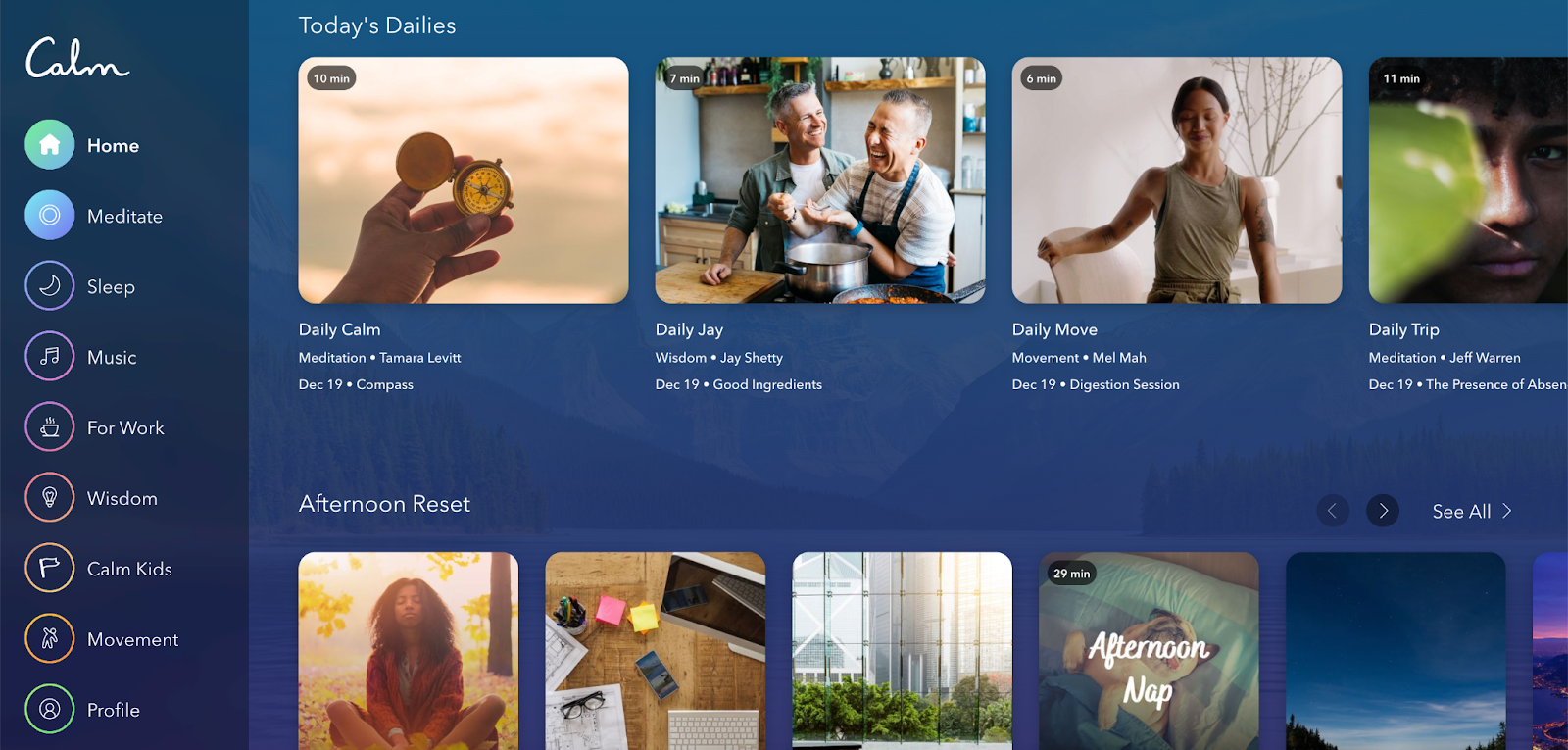
Calm’s desktop experience offers everything the mobile app does - except for the mood check-ins and reminders. I found browsing genres and stories to be easier and quicker on a desktop than mobile.
The key programs both apps offer
Headspace’s guided programs and podcasts
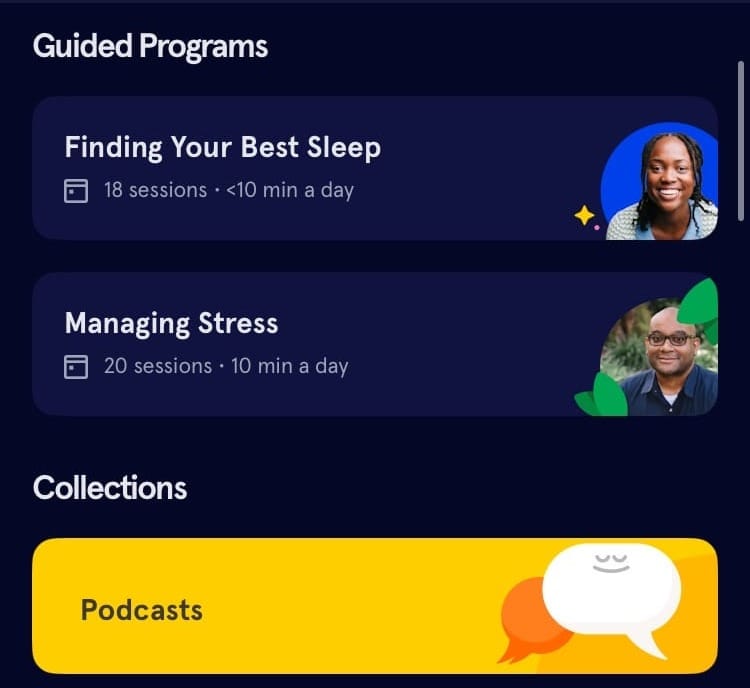
Headspace offers ‘Guided Programs’ to help you make gradual personal growth. For example, I was suggested a ‘Managing Stress’ program with 20 sessions - each one 10 minutes per day.
This is really where Headspace shines, as the programs remind you to take daily mindful steps, in short bite-sized chunks.
You can also listen to a single meditation session on demand - which is very useful if you want something like ‘anxiety reduction on the way to school’, or ‘Burned out SOS’.
There are also podcasts, lasting 30 to 60 minutes, discussing mindful topics at a deeper level. For example, there’s one called ‘HiberNation’ which explores sleep with scientists, artists, and everyday people. But, most of these podcasts are also available on Spotify or Apple Podcasts. So why pay for them here?
Calm’s Sleep Stories
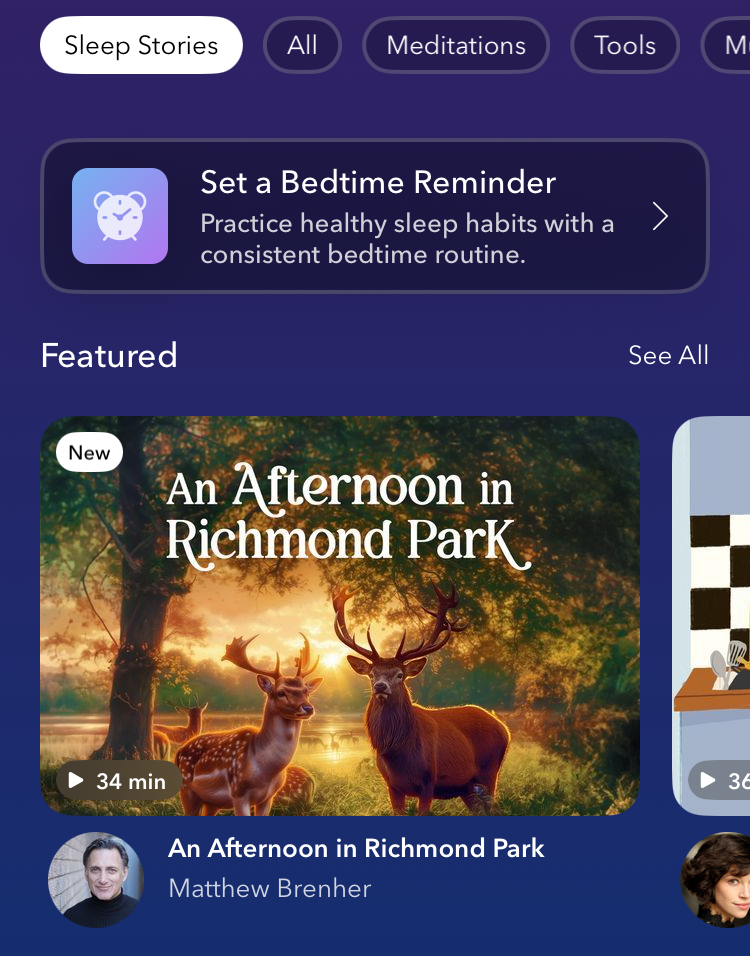
Calm’s main programs are a selection of ‘Sleep stories’ to help you drift off. These bedtime stories are mostly narrated by famous voices.
There are over 300 sleep stories to browse through, from nap stories and travel tales, to kid-friendly short stories and nonfiction readings (such as the rules of football).
If you like falling asleep to podcasts, the sleep stories are an extremely relaxing alternative. I don’t feel the need to fall asleep to Matthew McConaughey’s voice. Hearing super successful voices does not particularly help me reduce anxiety, but I get that for some people there’s a sense of familiarity.
Voices aside, there’s no denying the sleep stories put me to sleep over the week - thanks to a subtle sleepy backing track and dreamy subject matters.
It’s important to note that the sleep stories are not full audiobooks. For example, Roald Dahl’s BFG is excerpts only. They’re designed to induce sleep, rather than read you the entire novel.
What they were like for meditation
But what about meditation? How good are they at producing that state of focused attention and escape from yourself?
Headspace’s meditation for all levels
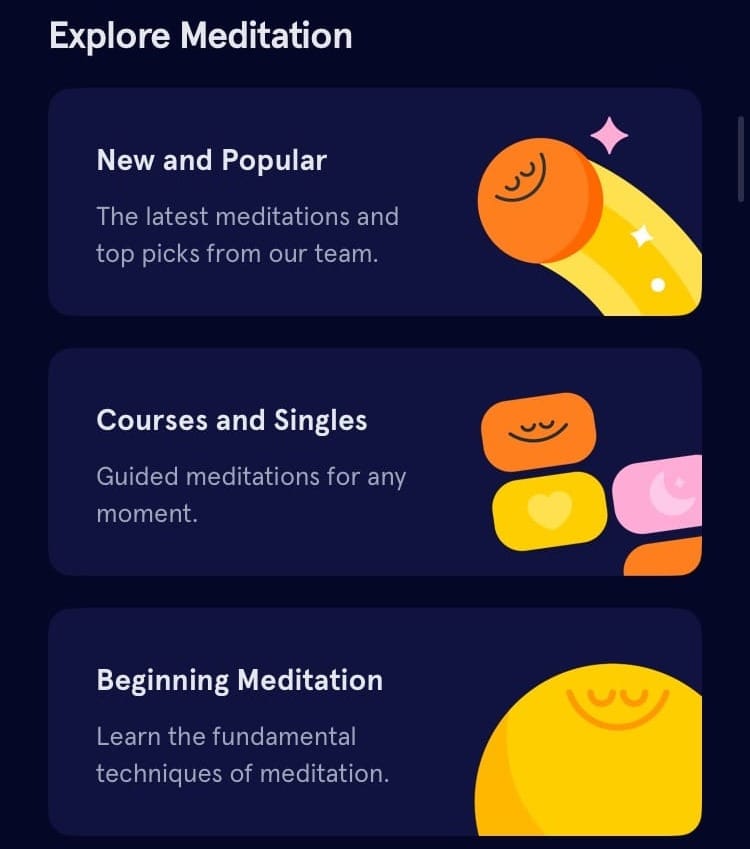
Headspace offers a large library of meditation sessions. They are updated regularly, so include a ‘new and popular’ curation. Courses are separated into groups, from beginner and SOS, to calming anxiety and courses for meditation pros.
As a beginner, I appreciated the slow start that introduces you to the concept and is quite forgiving of the failing you’ll inevitably face.
I dabbled in the more advanced courses out of curiosity too. They’re pretty in-depth (the guy is talking to me about my “lasting self”, OK). If meditation is a regular part of your life, I think you’ll enjoy it. Oh, that “guy” is the co-founder of Headspace and was once a Buddhist monk.
There are also niche-specific meditation sessions, including those for minorities and LGBTQIA+ community.
All in all, the meditation selection is very good on Headspace.
Calm’s ambient meditation
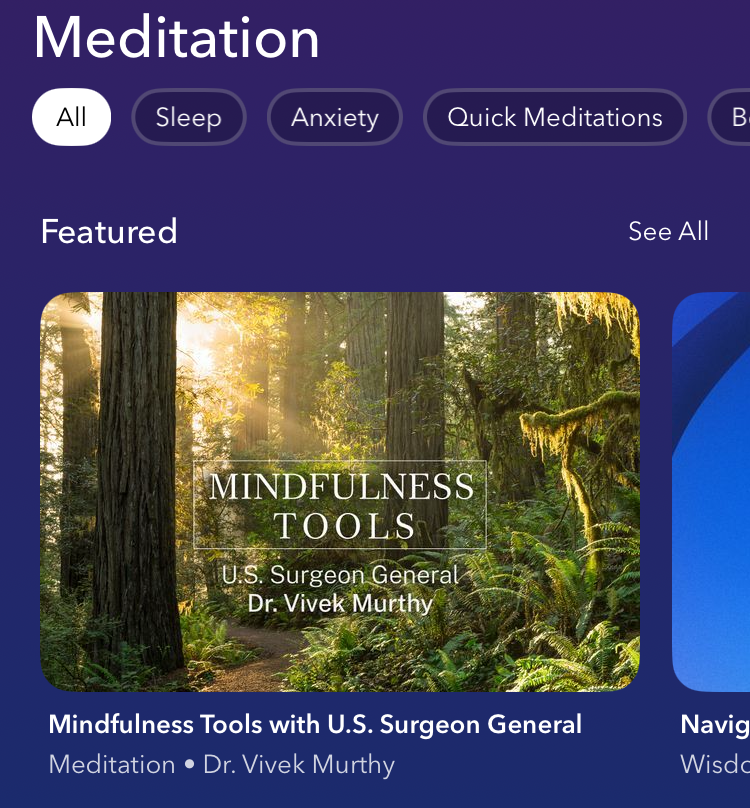
Calm also has a very large meditation library, which also crosses over into its sleep category. All the meditation sessions feature calming ambient background scenes - such as gentle ocean noises (the volume of these scenes can be adjusted)
Like Headspace, there’s something for everyone including beginner courses and a variety of narrators (phew, because I got tired of Jay Shetty’s voice pretty quickly).
I didn’t feel like the app was tailored for meditation experts. I couldn’t find courses labeled ‘advanced’, for example.
Meditation categories are present, but a little less niche than Headspace, from personal growth and anxiety to kids and stress.
Calm vs Headspace: Listening variety
Headspace’s niche podcasts
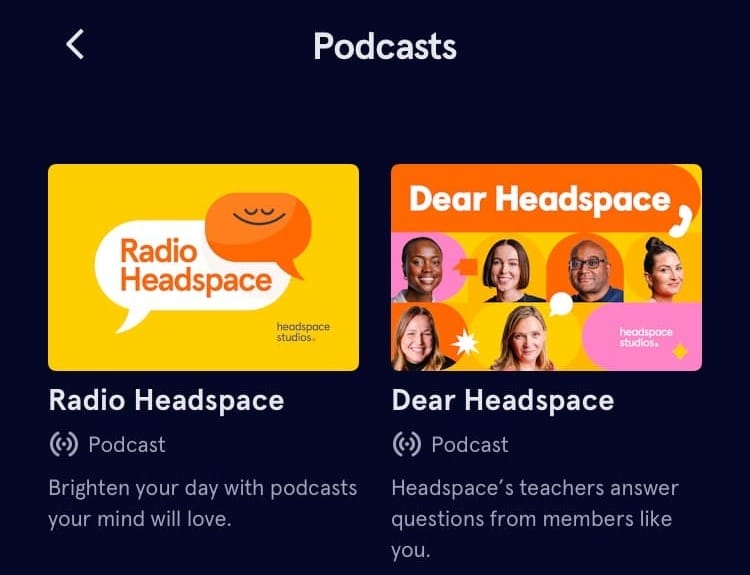
Headsapce’s podcasts and programs cover a very wide variety of topics and issues. From trauma and grief to daily stress and minor anxieties.
Although there isn’t a definitive number given, I estimate several hundred programs to choose from.
I like that there are both ongoing programs and SOS-type sessions for anyone who is completely overwhelmed at any moment (including instructions on meditation and breathing). SOS sessions can be instantly triggered on the iWatch.
Headspace’s Podcasts are made to be educational, with guides for personal growth in areas such as your work life, leadership, and self-confidence.
Headspace also has a dedicated ‘movement’ section, helping you to release physical stress and chill out. These often come with videos, which is very helpful when you’re trying to understand how to lie on your back, with your knees at 90 degrees, while your feet circle the air.
It’s important to note that the vibe is entirely different from Calm. The majority of Headspace’s sessions have a podcast-y, lecture approach. Yes, there are some ‘Sleepcasts’, but everything else is very different from Calm’s sleepy and dreamy style.
Calm’s soothing wisdom
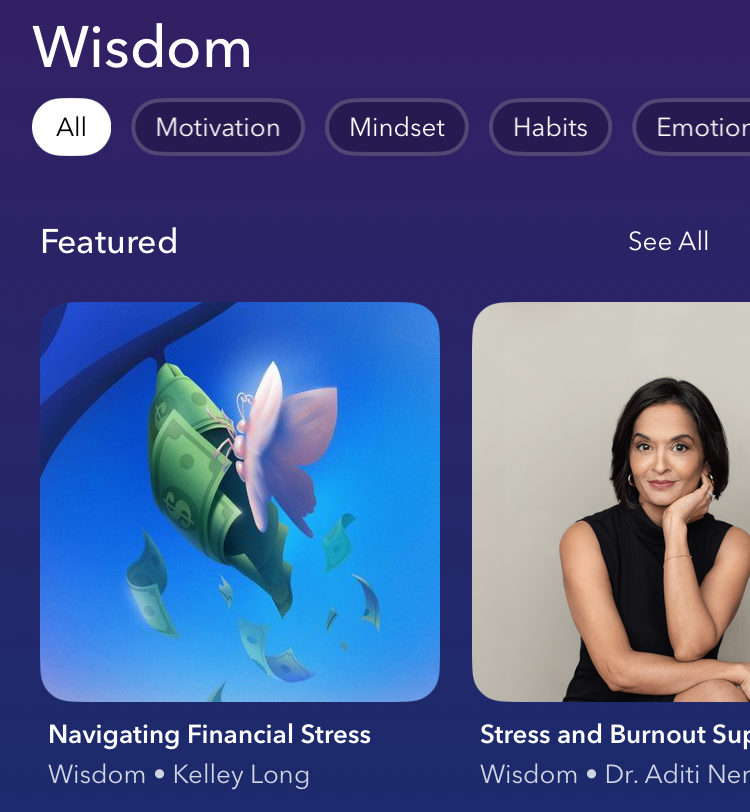
In addition to Calm’s Sleep Stories, it also offers a wide variety of content to listen to, including meditation, soundscapes, movement instructions, wisdom, and mindful tools.
In the meditation section, there is content for anxiety, ADHD, beginners, stress, work, self-care, inner peace, focus, relationships, and personal growth.
There’s something for everyone too. For example, I’m not a pregnant woman so I can’t vouch for its quality, but there’s an entire section dedicated to nurturing pregnancy both on the physical and emotional sides - from day one to due date. \
This can all be found under the discovery tab. I like how it is arranged a bit like a streaming app, with featured collections, filtering by duration, and even a ‘best of’ collection.
I’m more of a fan of the audio that helps me escape or control my breathing (the meditation side). But if you’re interested in tips and life coach narrations, Calm is stacked with it.
Unlike Headspace, Calm’s narration is always soothing and rarely crosses over into a cliché chatty podcast vibe.
What it was like practicing daily with both apps
Headspace
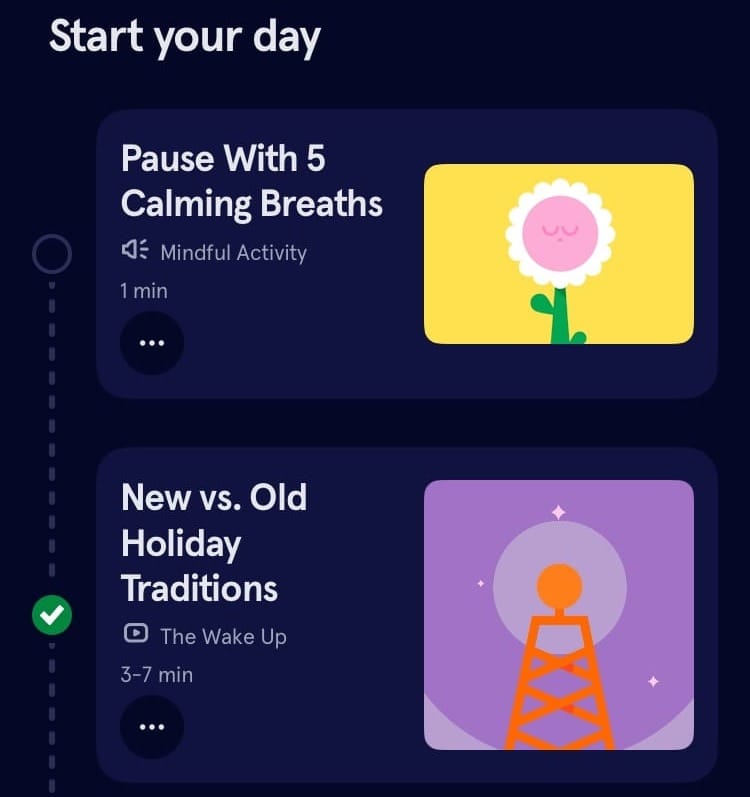
Headspace’s daily practice system offers multiple ‘tasks’ that you can take throughout the day, including the morning, afternoon, and evening.
Activities in your daily practice section can’t be customized but will adapt over time based on your preferred listening choices in the ‘explore’ tab. But you can use the explore tab to do any activity or session at any moment.
One of my day plans started with a breathing exercise, a 5-minute podcast session about dealing with the holiday season; then I was offered an ‘afternoon lift’ with music from Hans Zimmer, and my nighttime listening was a 45-minute ‘sleep cast’.
Calm
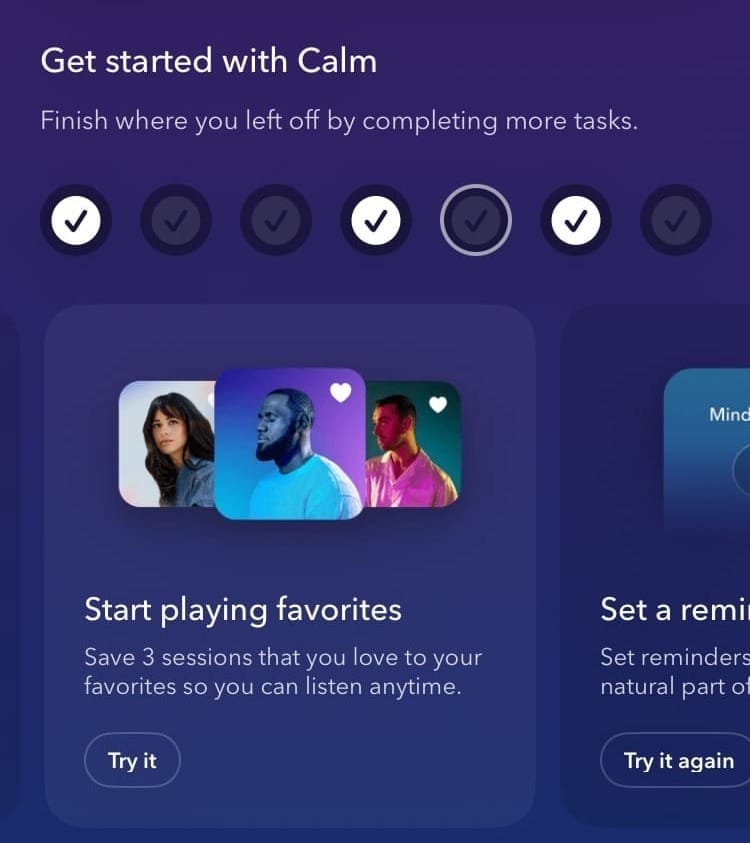
Calm features a daily practice system to help you make meditation and general calming a part of your daily life. You get around 5-10 activities to choose from every day, which are regularly updated.
I tried out the breathing and posture one. I felt at ease!
The voices are calming and instructions are clear. I found it helpful from a beginner's perspective too, as I was reminded that drifting off into distraction is meditation (if you pull yourself back).
There are also some physically focused interactive lessons; such as foot exercises that help you feel grounded. This didn’t do much for me compared to ambient sounds and sleep stories,
Reminders and check-ins on Headspace and Calm
Headspace
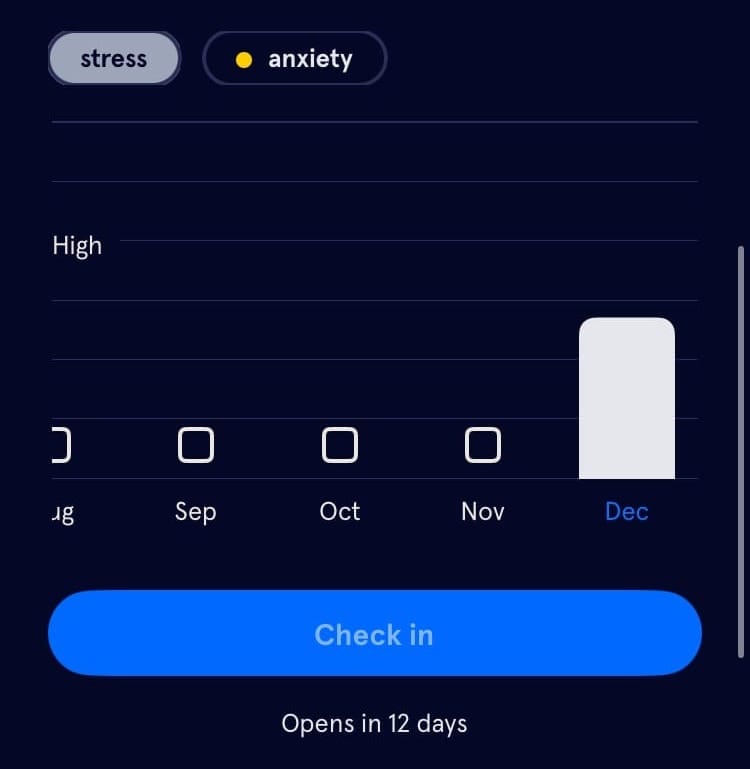
Headspace is all about trying to build life-long habits. So, you can set mindful reminders to stay committed to your goals. They’re set as if they’re appointments, such as “15 minutes at 5:30 on weekdays”. It’s a feature that any busy or forgetful person will appreciate.
When you start the app each day, you’ll get a check-in prompt to say your current mood. You can also do a monthly quiz to record how often you’ve felt stressed, overwhelmed, angry, etc. It’s a bit like journaling and a lot more detailed than Calm’s mood check-in, so bonus points there.
There’s also an ‘activity history’ section, where you can see what sessions you’ve viewed and completed.
Calm
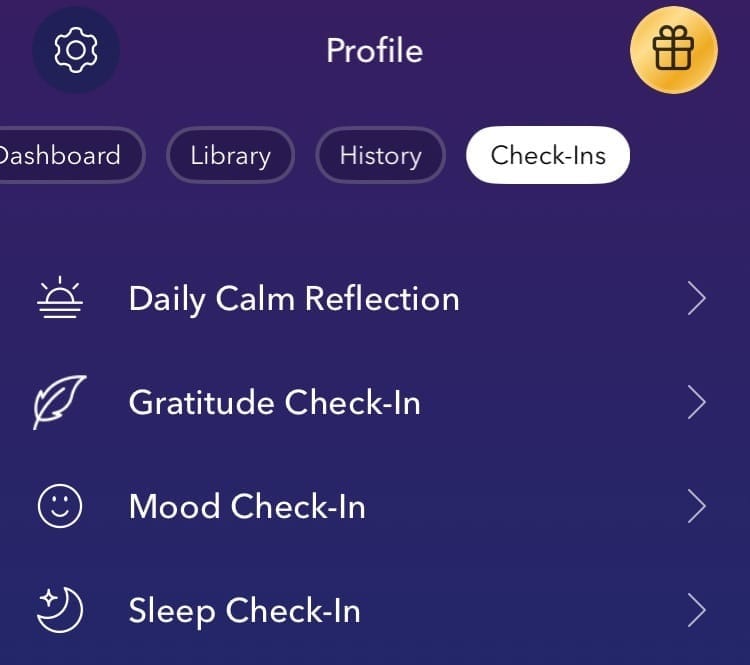
Calm asks you to ‘check in’ from time to time, recording your current mood. It can help you track where you’re at emotionally, and see what tasks helped you out. While not as detailed as Headspace, I enjoyed the check-ins across the week. It’s available for daily calm, gratitude, mood, and sleep quality.
You can set mindfulness reminders, pinging you with a notification when it's time to do an activity.
There’s also a streak function, which tracks how many days in a row you’ve used the app and your total mindfulness minutes. I don’t care for this feature. It’s not Duolingo, I don’t need to feel bad for missing a day.
Like Headspace, Calm has a history section for viewing previously completed activities.
The music available
I’m a big ambient music user. Whether it's to fall asleep or help me focus while working, I know its value. So, I was very curious to see how Headspace and Calm’s music selection compared to Apple Music’s ambient playlist curation.
Headspace’s award-winning artist exclusives
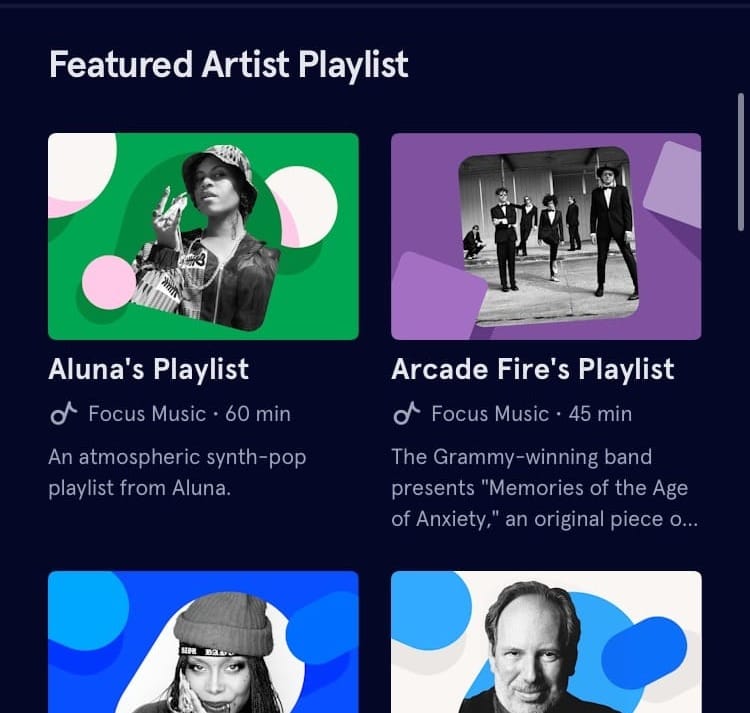
Headspace’s music section includes Binaural Beats, Focus Music, Soundscapes, Sleep Music, White Noise & Sleep Sounds, and Sleep Radio.
I went through each category while working on another article and found them very helpful for focusing. The majority of ‘generic’ Music offerings come in 45-minute sessions, which has a similar effect to Calm’s ‘infinite’ music selection.
But what makes it stand apart from calm is the artist-curated or created playlists. The likes of Hans Zimmer and John Legend have created music exclusively for Headspace and they offer genuine character, which is very different from the more generic generative offerings in the non-artist labeled categories.
There are also different types of ‘noise’ sessions, such as white noise, violet noise, and brown noise (yeah, don’t worry. That’s not what you think it is). And there are ‘sleep radios’ which are non-stop ambient sound, such as rainfall over some gentle drones, or ethereal electronics over the ocean.
You can listen to all of this with the app minimized. My only criticism is that you can’t continue browsing the Headspace app itself while listening to something. But perhaps that’s by design to increase focus.
In summary, Headspace’s music selection is very good. It’ll save you a lot of time browsing YouTube or Spotify for specific playlists that provide similar results. Everything here is very well curated, and I’m a big fan of the artist's specific creations.
I wouldn’t suggest getting the app solely for the music, but it provides a bonus with all the other content.
Calm’s chill out playlists
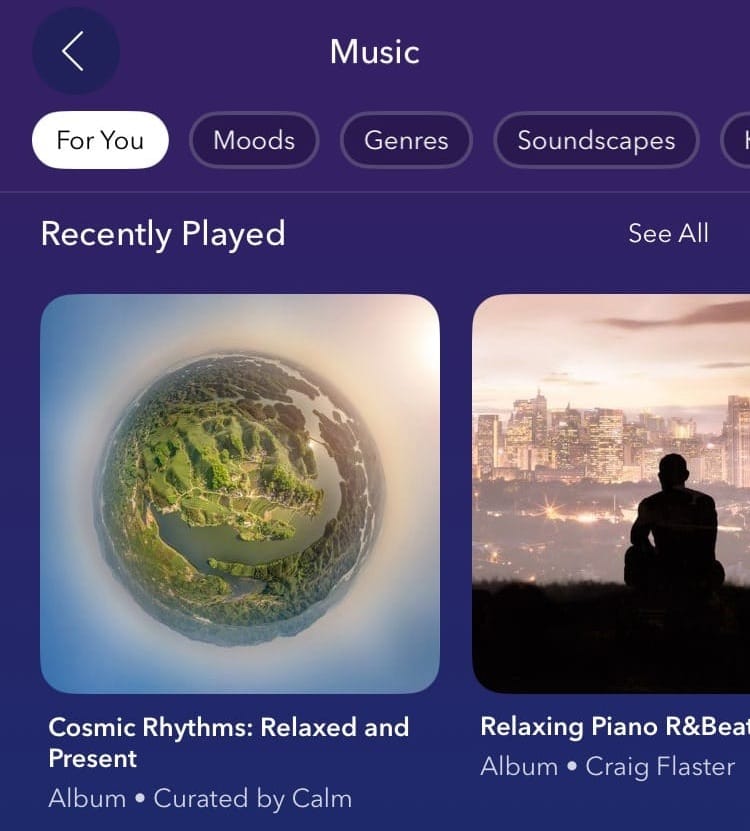
Back in 2019, Calm went all out on expanding its musical selection. Now, it has a large amount of chill music, including playlists that are 3-5 hours long.
Firstly, everything is selected to chill, focus, and provide a positive experience. That often gives all the music a sort of sterile feel, if I’m honest. But, you’re likely here for that calming experience. Not a sudden trip into sadness.
There are exceptions to that sterile feeling, but you’ll need to seek them out. For example, with the classical section - featuring ‘hits’ such as Clair de Lune. Debussy fans cheer.
Genres include ‘infinite music’, piano, ambient and atmospheric, electronic, remix, beats, guitar, nature melodies, sound baths, vocals, lullabies, and new age.
The Infinite Music section is particularly interesting. Calm says it's been designed by real musicians, but built with coding to make it play infinitely and ever-changing. So, you can click pay and sit in a mood for literally hours.
If you like chill beats YouTube playlists, the chill section genre is perfect for you.
Generally, the music section is very good, albeit a bit generic. But, if you rely on music to calm you and focus, I think you’ll enjoy it. Heck, I’ve still got it on while writing this!
ASMR on Calm and Headspace
I’m not a big ASMR fan, but reports show that 20% of people respond positively to ASMR triggers. So, I had a look at what Calm and Headspace offer the ASMR fans.
Headspace’s voice volume
Headspace has a tiny choice of true ASMR. I could only find two ASMR sessions - both lasting 45 minutes and both ‘Sleepcasts’.
But, in all ‘Sleepcasts,’ you can adjust the volume between ambiance and voices. So you can really fine-tune your experience towards the mouth sounds that I know you ASMR folk adore. If Headspace adds more ASMR sessions, they’d win this category.
Calm’s ASMR artists
Calm’s ASMR choice is limited to ASMR stories. So if you just want tingles and triggers like finger tapping and creative sounds, you'll be left disappointed.
There’s also no video with the ASMR, which many ASMRs rely on for the true experience. I was a bit surprised by this, as ASMR is such a major use for calming online.
There are some big-name ASMR artists to choose from, such as Emma Whispers Red and Paris ASMR, but I could only find one story per artist. So, you’ll just end up using YouTube if you love them…
What do the public think?
Headspace is currently ranked 66 in the U.S. Apple App Store, with a 4.8/5 rating from over 1 million users.
Calm is ranked at 9 on the U.S. Apple App Store, also with a 4.8/55 rating from 1.8 million users. It was also Apple’s app of the year in 2017 and Google Play’s in 2018.
Calm vs Headspace: Recap
| Category: | Headspace | Calm |
| Pricing: | Cheaper per month (just) | Cheaper per month (just) |
| User experience: | Linear & organised | Calming & customizable |
| Desktop browser: | Mid. | Great! |
| Key programs: | Podcasts & guides | Sleep stories |
| Variety: | Wide and specific | Specific and wide |
| Daily practice: | Gives momentum. | Instantly calms you. |
| Check-ins: | Detailed and trackable. | Basic. |
| Music: | Wide, with award-winning artists. | Wide, calming & positive. |
| ASMR: | Minimal. But sleepcasts have voice volume control. | Minimal, but famous ASMR artists. |
Which is better, Headspace or Calm?
This may seem like a cop-out, but deciding between Headspace or Calm will really come down to what your specific needs are.
The app names very strongly hint at the general experience you’ll have, with both offering meditation guidance.
Headspace is very focused on mindfulness, personal growth, and guru guidance. Podcasts and discussions are at the forefront.
Calm is more about getting you to sleep and chilling out. It works on relieving stress, helping you escape, and enjoying your favorite ASMR tones.
But there is overlap on both apps, with Headspace offering extensive focus music and SOS breathing technique. While Calm also has podcasts and dreamy personal-growth stories.
If you want to be put to sleep with stories and ASMR, go for Calm. If you want to focus while working, or listen to experts helping you with personal growth, go for Headspace.
For me, Calm is best. It’s extremely relaxing, a great starting point for meditation, and has a more chill user experience. Across my review, I found it helped me fall asleep, chill out on the subway, and act as a positive little app I could turn to without needing to lock in.
I can’t criticize Headspace, but it’s an app that I find you generally need to give full focus to. It’s less about locking your screen and zoning out. That isn’t what I need right now. But, if you’re after podcasts and focused guidance, you’ll prefer Headspace.
I’d recommend using the free trial of both apps if you’re still undecided.
Use Whop to discover personal growth
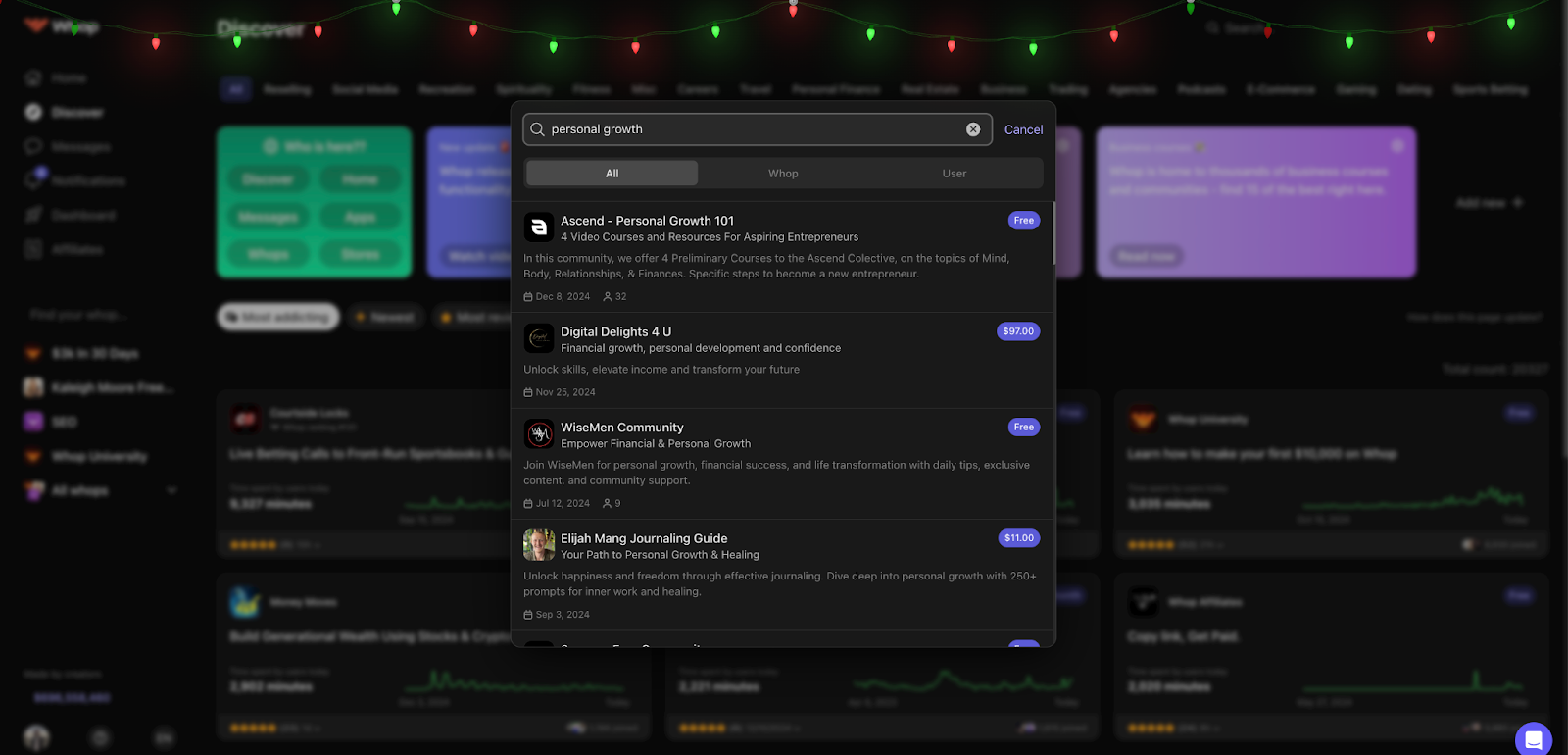
If you’re after a more bespoke personal growth experience, then consider browsing the Whop Discover page. It’s stacked with supportive groups and mentors, offering paths to anything from healing and personal growth, to confidence and professional empowerment.
The majority of whops come with dedicated communities, including exclusive chats, courses, digital products, and feedback.
There’s also an awesome selection of fitness and spirituality whops, to help you manifest your dreams, improve your body and mindset, and unlock your potential.
It’s free to start using and could be the start of a better future. Why not give it a go?
FAQs
Which is the best meditation app for sleep?
Calm! It’s designed with sleep meditation as a primary purpose. Its sleep stories, calming music, and ambient soundscapes are of great help.
Which is the best meditation app for focusing on work?
Headspace. Its music is very much designed for focus, whereas calm is likely to make you feel more sleepy.
Which is the best meditation app for personal growth?
Headspace! While both apps offer countless personal growth and wisdom sessions, Headspace goes really hard on specific niches and has a very useful reminder system.
Which is the best meditation app for anxiety?
Tough choice! Calm is great at providing solutions to calm you down in a moment, through breathing or just very calming voices and sounds.
Headspace is better for trying to learn mindfulness techniques that you can use to tackle anxiety long-term.
Which is the best meditation app for meditation?
Calm for beginners and casual users. Headspace for advanced users and niche topics.


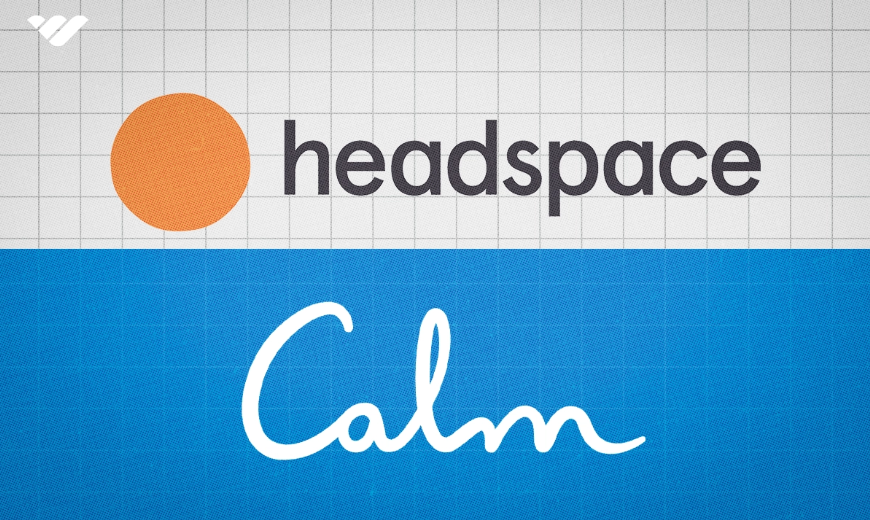
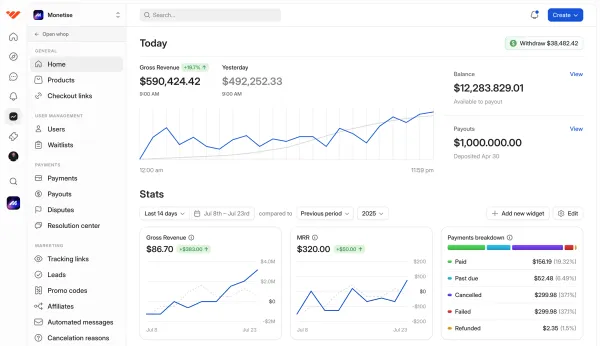
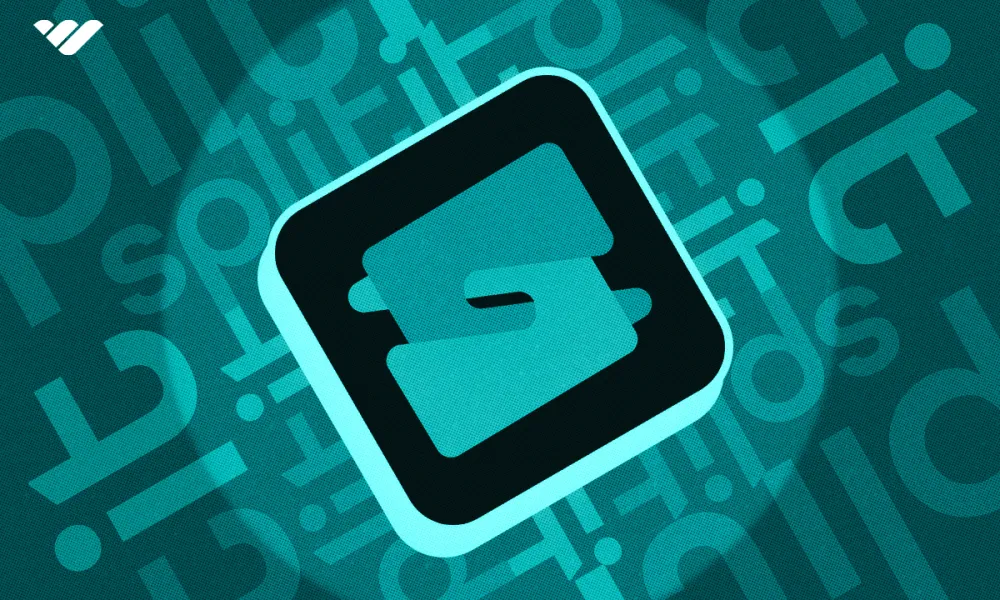
![Mighty Networks: is it the best choice for your community? [2026 review]](/blog/content/images/size/w1000/2024/05/What-is-Mighty-Networks-Features--Pricing--and-Alternatives-2024-Review.webp)

![The best online newsletter platforms [2026]](/blog/content/images/size/w1000/2024/05/Best-online-newsletter-platforms.webp)
![Top 17 best online course platforms to sell your course [2026]](/blog/content/images/size/w1000/2024/06/Best-Online-Course-Platforms.webp)
